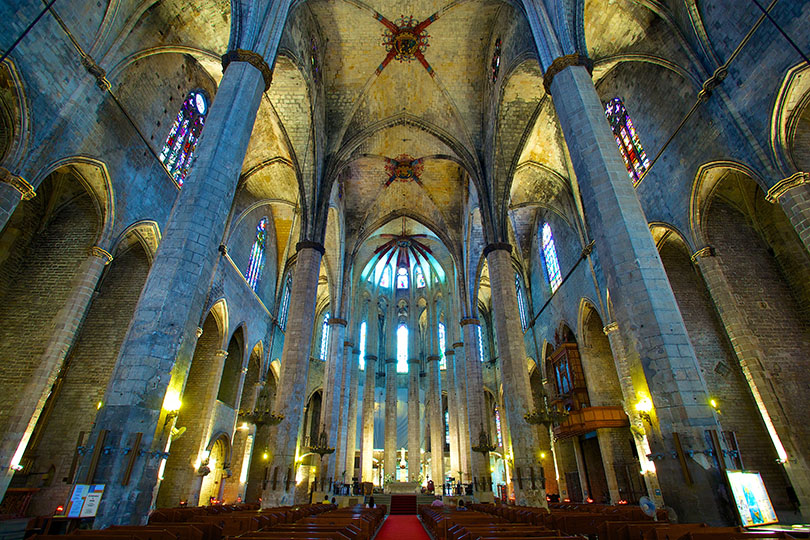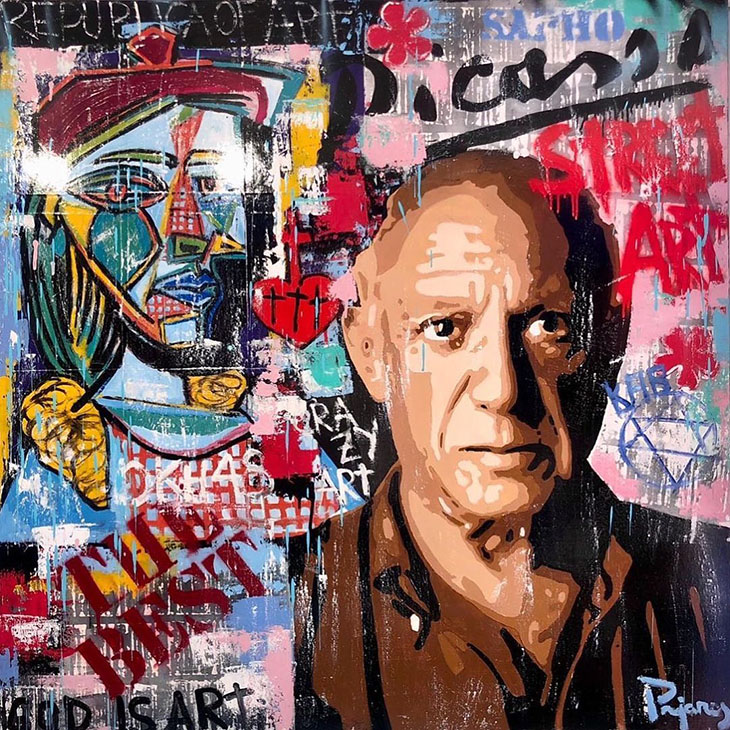
Incredible Gothic naves in Santa Maria del Mar Church, Barcelona; credit J Wang
Barcelona History
Barcelona was founded on the Mediterranean coast between 27-19 BC by the Roman Emperor Augustus. It was called “Barcino” and settled as a colony to distribute land amongst retired Roman officers and soldiers. This is a significant point because the Roman Emperor and Senate did not want returning generals and their armies returning to live in or near Rome due to concerns about a coup d’etat.
Thus, Roman leadership was content to establish a governor of this beautiful and sufficiently distant land in the Northeast Iberian Peninsula, just a short distance from what became France. Its strategic position on the Mediterranean Sea allowed its commercial and economic development, and it enjoyed immunity from Roman taxation.
By 250 AD, the Barcino city wall was built as a defense against the Germanic tribes. The wall was notable for having 28 tall towers and making it safer against attacks from the neighboring colonies.
Christians were widely persecuted and in some cases martyred until 313 when the Edict of Milan brought such rampant cruelty to an end in Barcina and other Roman colonies. Thus Christianity began to flourish. The Basílica de la Santa Cruz was constructed around the end of the fourth century in the region.
Then by 415, the Germanic Visigoths moved across the Pyrenees Mountains and conquered the region then called Tarraconensis. By marriage, the Visigoth ruler mediated a settlement with Rome to rule the region they called Hispania. Barcino remains an important provincial center of the Visigoth kingdom because of its excellent defensive walls.
Then after the death of the Visigoth ruler against the Franks in 507, his successor Gesalec (507–511) moved the capital from Tolosa to Barcino. More wars removed its capital status by 573.
The language spoken at the time was Vulgar Latin, including by the Visigoth rulers who were Latinised. Over time, the Latinized city name evolved to “Barchinona.”
The Crusade forces of change were underway and in 717, the Arab Moors conquered Spain. Barchinona surrendered peacefully and was spared devastation. Under Moorish rule in Barchinona, the cathedral was converted into a mosque. Taxes were levied on non-Muslims, but religious freedom and civil government were largely respected.

Mural of Pablo Picasso, the most famous artist-resident in Barcelona; credit Barcelona Tourisme
Louis the Pious, son of Charlemagne, captured the city in 801 for the Franks. The area came to be called “Barcelona” and remained under the rule of French Counts for centuries.
As French influence in government, language, art, and commerce grew, the Catalan people felt more deprived of their own state, in many ways, than when they lived under Moorish rule. The city of Barcelona became the largest settlement in Catalonia, which became an important province of the emerging country of Spain.
By the late 13th century, the Catalonian empire became a great economic power in the Mediterranean as Barcelonians dominated sea trade. The Gothic Area, with magnificent medieval buildings, is a relic of their wealth during this expansive era. Then in 1410, the last king of Barcelona died without a descendent. Without good leadership, Catalonia plays second fiddle to Madrid as the emerging economic base of Spain.
Matters worsened from 1462-1473 during the Catalonian Civil War and the marriage of Ferdinand II of Aragon and Isabella of Castile in 1469 united the two royal lines to form a unified Spain.
The center of Spanish political power became Madrid and with the colonization of the Americas, Spain became more interested in riches obtained from the New World. That increased the importance of Spanish port cities closer to the Atlantic Ocean. With all these factors Barcelona declined in its Spanish influence for centuries.
By the mid-19th century, Barcelona’s population burst through the medieval walls surrounding the city. The extension of Barcelona was designed by Idelfons Cerdà. The construction of Eixample began in 1860. The linear pattern can still be seen today. Cerdà’s plan divides the larger city into 550 blocks, uniformly crossed by streets and three boulevards with plazas and green spaces. Fantastic civil engineering!
